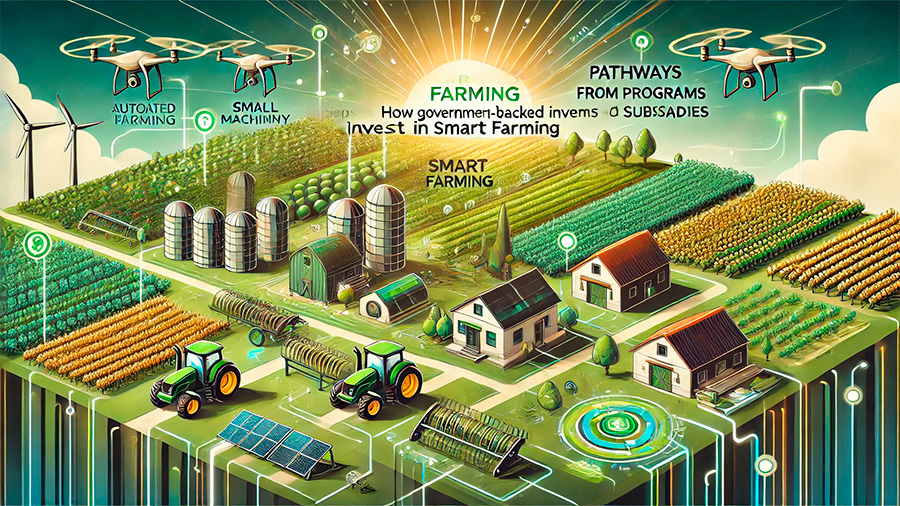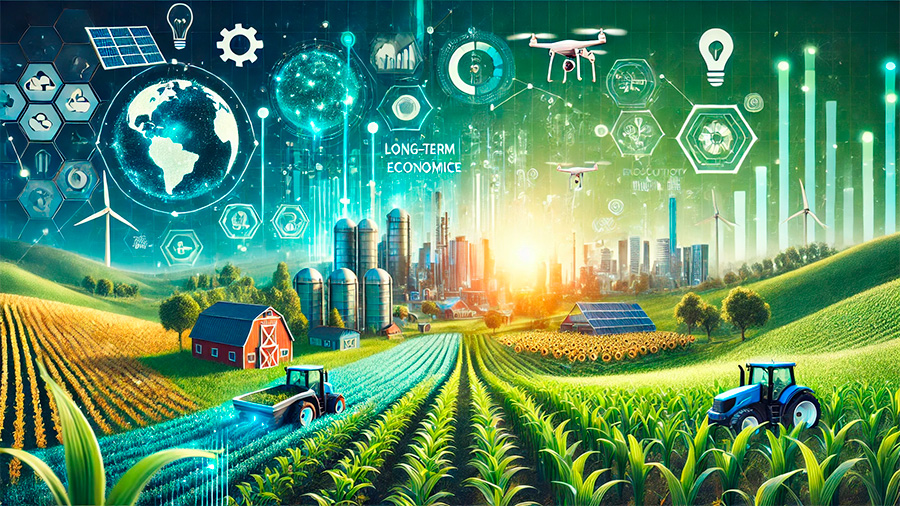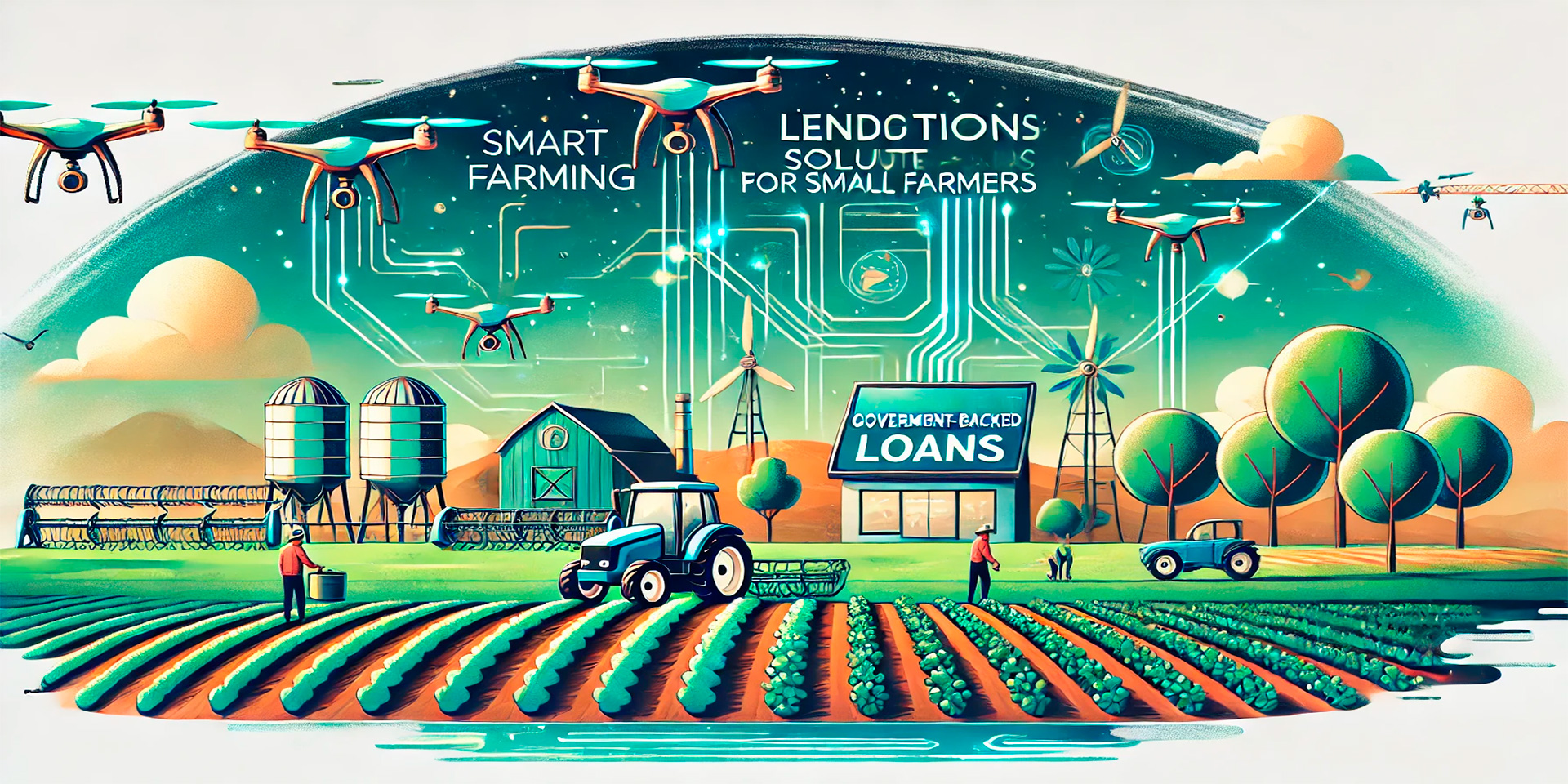The agricultural sector is undergoing a technological transformation as smart farming solutions become increasingly vital for enhancing productivity, sustainability, and efficiency. Smart farming, also known as precision agriculture, leverages advanced technologies such as sensors, data analytics, drones, and automated machinery to optimize farming operations. However, the adoption of these cutting-edge technologies often requires substantial investment, which can be a barrier for many farmers. Government-backed lending programs are playing a crucial role in making smart farming solutions more accessible, driving the future of agriculture.
This article explores how government-backed lending is transforming the agricultural sector by facilitating the adoption of smart farming technologies, helping farmers improve yields, reduce costs, and promote sustainability.
The Role of Smart Farming in Modern Agriculture
Smart farming refers to the use of digital tools and advanced technology to monitor, analyze, and manage agricultural processes. By collecting real-time data on soil conditions, weather patterns, crop health, and equipment performance, farmers can make more informed decisions, resulting in better resource management and increased efficiency. This technology-driven approach is particularly important as the global demand for food rises, and farmers face challenges such as climate change, water scarcity, and labor shortages.
1. Precision Agriculture for Optimized Farming
One of the core components of smart farming is precision agriculture, which allows farmers to apply water, fertilizers, and pesticides in precise amounts, at the right time and place. This targeted approach minimizes waste, reduces environmental impact, and maximizes crop yields. For instance, soil sensors can detect nutrient deficiencies in specific areas, allowing farmers to address issues without overusing fertilizers.
Benefits of precision agriculture:
- Increased efficiency: By using resources more effectively, farmers can reduce costs while improving crop quality and yield.
- Environmental sustainability: Precision agriculture reduces the need for excessive chemicals and water, minimizing the environmental footprint of farming operations.
2. Data-Driven Decision-Making
Smart farming relies on real-time data collection through technologies such as drones, satellites, and IoT devices. This data is then analyzed to provide insights that help farmers make better decisions regarding planting, irrigation, fertilization, and pest management. By using data to predict crop growth cycles, manage risk, and optimize supply chains, farmers can increase their operational efficiency and profitability.
Examples of data-driven farming tools:
- Drones and aerial imagery: Drones provide real-time aerial views of crops, helping farmers monitor crop health and detect potential issues early.
- IoT sensors: Sensors placed in the field collect data on soil moisture, temperature, and other variables, helping farmers fine-tune irrigation and fertilization schedules.

How Government-Backed Lending Supports Smart Farming
While the benefits of smart farming are clear, the high costs of implementing these technologies can be a significant barrier for many farmers, particularly small and medium-sized operations. Government-backed lending programs are stepping in to bridge this gap, providing affordable financing options that enable farmers to invest in smart farming solutions. These loans often come with favorable terms, such as low interest rates, extended repayment periods, and targeted support for technology adoption.
1. Low-Interest Loans for Technology Investment
Government-backed loans with low interest rates make it easier for farmers to invest in expensive smart farming technologies, such as automated machinery, drones, and data analytics platforms. By reducing the cost of borrowing, these programs encourage farmers to adopt innovations that improve productivity and sustainability. Low-interest loans are especially important for smaller farms that may struggle to secure traditional financing for large capital investments.
Impact of low-interest loans:
- Affordable access to technology: Farmers can invest in smart farming equipment without facing prohibitively high borrowing costs.
- Encouraging modernization: By lowering financial barriers, these loans accelerate the adoption of new technologies across the agricultural sector.
2. Grants and Subsidies for Sustainable Farming
In addition to loans, many governments offer grants and subsidies aimed at promoting sustainable farming practices. These programs help farmers transition to smart farming solutions that reduce environmental impact, such as water-saving irrigation systems or renewable energy-powered machinery. By providing financial incentives, governments encourage the adoption of technologies that not only improve farm efficiency but also contribute to long-term sustainability.
Examples of government subsidies:
- Water conservation grants: Financial support for installing efficient irrigation systems that reduce water usage and improve crop yields.
- Renewable energy incentives: Subsidies for farms that invest in solar panels, wind turbines, or bioenergy solutions to power their operations.
3. Targeted Lending Programs for Small Farmers
Many government-backed lending programs specifically target small and medium-sized farms, which are often the most in need of financial support. These programs provide tailored financing options to help small farmers invest in the smart technologies necessary to remain competitive in the modern agricultural landscape. By leveling the playing field, these loans ensure that smaller operations can benefit from the same technological advancements as larger industrial farms.
How small farmers benefit from targeted lending:
- Access to advanced technology: Small farmers can use government-backed loans to invest in precision agriculture, drones, and automated equipment that would otherwise be out of reach.
- Improved competitiveness: By adopting smart farming solutions, small farms can increase productivity and reduce costs, allowing them to compete with larger agricultural enterprises.

The Long-Term Economic and Environmental Impact of Smart Farming
Government-backed lending for smart farming has the potential to create long-term economic and environmental benefits for the agricultural sector. By enabling farmers to invest in cutting-edge technologies, these programs help increase agricultural productivity, reduce resource consumption, and promote sustainability. Over time, these advancements can lead to more resilient farming systems, increased food security, and a healthier planet.
1. Boosting Agricultural Productivity
Smart farming technologies allow farmers to optimize their operations, leading to higher crop yields and more efficient use of resources. By reducing waste and maximizing output, these technologies can help meet the growing global demand for food. As farmers become more productive, they contribute to the overall economic growth of the agricultural sector, creating jobs and supporting rural economies.
Economic benefits of increased productivity:
- Higher yields and profitability: Farmers who adopt smart farming technologies can achieve better results with fewer resources, leading to higher profits and increased investment in the sector.
- Job creation: As smart farming technologies become more widespread, there is an increased demand for skilled workers who can operate and maintain this advanced equipment.
2. Promoting Environmental Sustainability
One of the key advantages of smart farming is its potential to reduce the environmental impact of agriculture. By using data to optimize water and fertilizer use, smart farming technologies help farmers minimize waste, conserve natural resources, and reduce greenhouse gas emissions. Additionally, the adoption of renewable energy solutions can further reduce the carbon footprint of agricultural operations.
Environmental benefits of smart farming:
- Water and soil conservation: Precision agriculture techniques reduce the overuse of water and fertilizers, helping to protect soil health and preserve water resources.
- Lower greenhouse gas emissions: Automated machinery and renewable energy solutions help reduce the reliance on fossil fuels, contributing to climate change mitigation efforts.
Conclusion
Government-backed lending is playing a pivotal role in transforming the agricultural sector by making smart farming solutions more accessible to farmers of all sizes. Through low-interest loans, grants, and targeted financial support, these programs enable farmers to invest in advanced technologies that improve productivity, promote sustainability, and ensure long-term economic growth. As the agricultural industry continues to evolve, smart farming will be a critical component of its future, and government support will remain essential in driving this transformation.

